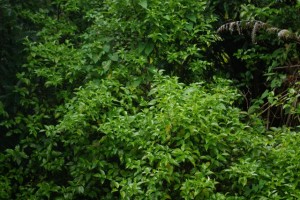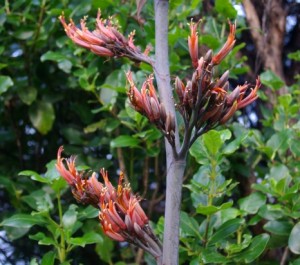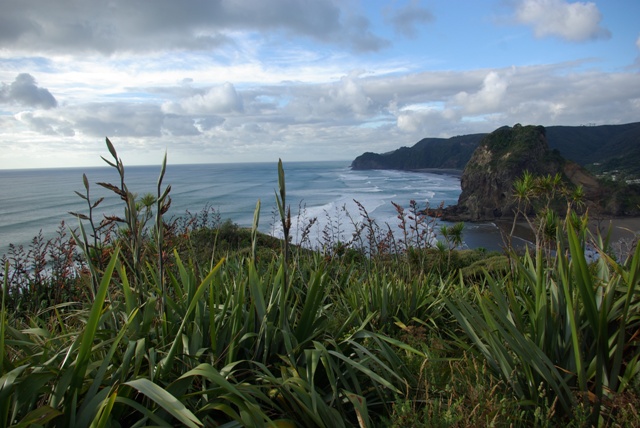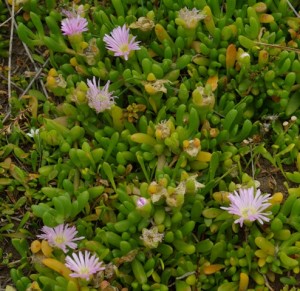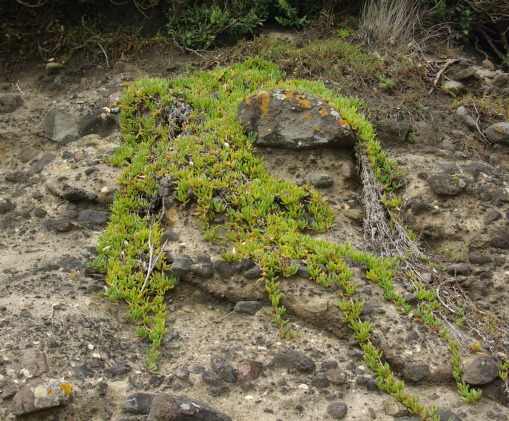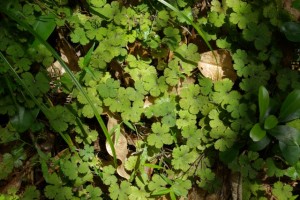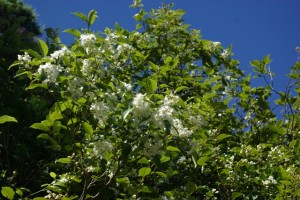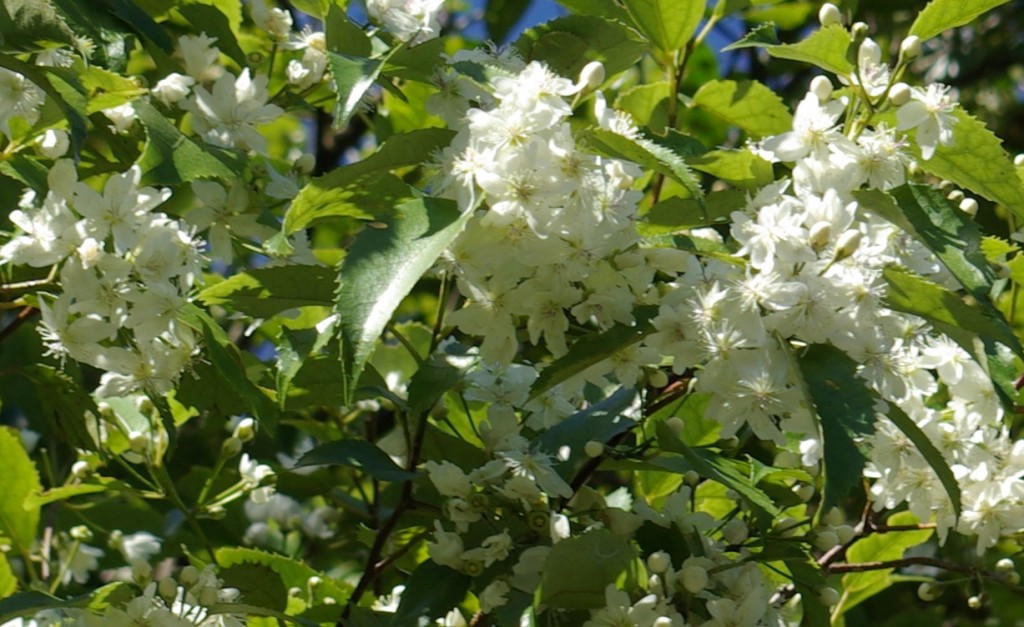Hangehange
Geniostoma ligustrifolium family Loganiaceae
This unimpressive little shrub serves a very useful purpose in forest, especially sealing the margins of bush when adjoining clear areas and roadsides. It is very common and self-seeds readily.
Hangehange is a much-branched bushy shrub with soft shiney light-green leaves. It is the first plant in the forest to droop in a drought but usually revives when there is a good shower of rain. The flowers are pale whitish-green and you would not even notice them unless you were searching for them. They appear in September-November in small clusters from the bases of the leaves. They are heavily scented with the perfume detectable from some distance. The following seed pods are rounded with a pointed end and light green.
Harakeke or flax
Phormium tenax family Liliaceae
Flax is one of the iconic plant species of New Zealand and is indeed only found in New Zealand and Norfolk Island. Unlike the European flax which is part of the linaceae family and which are small herbaceous plants, the New Zealand flax is a member of the lily family and is a large handsome plant with distinctive sculptural form and striking flowerheads.
Flax grows in a number of habitats including coastal hillsides, wetlands, and lower mountain regions. Plants can grow to about 2 to 3 metres high with the thick handsome leaves growing from the crown of the plant. The leaf is folded length-wise from tip to base with a prominent mid-vein and mature leaves are often split at the top. The plant leaves have incredible strength and rigidity which enables them to stand upright for their entire length, and allows them to withstand being shredded by the strong winds they are exposed to in many of their coastal habitats.
Plant stalks can be as tall as 5m tall, the reddish flowers appear from November to January. They excrete a great deal of nectar which makes them highly attractive to birds. One of the iconic sights of the New Zealand summer is tui gorging on flax plants. The seed pods are a luscious shiny black and when mature they split open and out spill large numbers of shiney black seeds. The seeds are very easy to germinate: no preparation is necessary, simply put them in a seed tray with a light covering of sand or soil and keep them watered. They are quite satisfying little plants to pot up and grow.
The fibre of the leaf of the flax is very strong and because of the length of the leaves, strands can be very long. Flax was used by the Maori for many purposes, for twine and to make mats and kete. Maori recognised as many as 50 different varieties of flax and today treasure fields containing particularly valued plants.
During the 19th century there were flax mills in many parts of the North Island, including along the West Coast of Auckland, and the flax industry was a major one. This was brought to its knees by the flax yellow leaf virus which destroyed entire fields and is impossible to control.
Horokaka or pigs face or native ice plant
Disphyma australe Family Aizoaceae
This prostrate succulent herb spreads over and trails down the rocky coastal cliffs of Piha often forming quite thick mats close to the sea. Take a walk to The Gap and you will find it growing in many places on the volcanic cliffes.
The stems may be up to a metre long and the three-sided leaves are short and fleshy. It roots freely at the node.
When it flowers in mid to late summer it has daisy-like flowers with up to 50-60 spreading petals in 3-4 rows. Colour can be cream to mauve to deep pink.
Horokaka is a relatively common plant and has non-threatened status. It can be propagated from a rooted piece or from seed.
Maori used to take the juice from the leaves to draw boils and abscesses and to relieve itches.
Hydrocotyle elongata or pennywort
Family Apiaceae (Dawson) Araliaceae
A tiny creeping herb that is found prolifically on the forest floor or damp open sites covering the ground or emerging between fallen leaves. Plants are frequently seen along the sides of tracks in the Waitakeres.
The leaves are a little like the shape of a clover and have five lobes edged with tiny pointed teeth. The flowers are green and inconspicuous. A small common plant that adds to the diversity and interest of our forest.
Houhere or Lacebark
Houheria Populnea family Malvaceae
This small graceful tree puts on a great display in late summer and autumn when it is smothered in white starry flowers. The lacebark derives is European name from the inner bark of the tree which has a lace-like pattern, It was used for women’s hats and for ornamenting baskets in former times. Maori used the bark to make tapa cloth for cloaks for their chiefs.
The tree grows to about 11 metres high and is found in coastal and lowland forest in the North Island from North Cape down to the Waikato and Bay of Plenty growing from sea level to about 450 metres.
The leaves are long and oal with saw-teeth edges anda pointed tip. The veins are quite prominent and the leaf is thinnish.
The flowers are beautifully formed with many cream stamens at the centre and born in great trusses. The yellow fruits are winged with each one containing a single seed. It is easily grown from seed.



